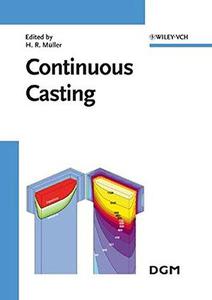
Continuous Casting: Proceedings of the International Conference on Continuous Casting of Non-Ferrous Metals By
2005 | 385 Pages | ISBN: 3527313419 | PDF | 7 MB
During the last decade, continuous casting has gained increasing importance as a highly developed technology for the production of superior quality pre-forms for specific subsequent processing by both the copper and the light metals industry. Current progress also includes spray forming as an increasingly important processing option. Therefore, experts from the manufacturing industry, researchers and scientists from university and industry as well as suppliers of equipment and ancillary products need to stay up-to-date on most recent technical, economical and ecological developments. These Proceedings of the Continuous Casting 2005 conference will review the complete range of the processing chain covering both melt treatment and casting technology as well as specific measures for micro-structural control. A focal point of the programme will deal with modelling and simulation that has become an integral part of modern manufacturing. But also safety and health aspects will be approached.

Constitutive Modeling of Soils and Rocks By
2008 | 447 Pages | ISBN: 1848210205 | PDF | 8 MB
This title provides a comprehensive overview of elastoplasticity relating to soil and rocks. Following a general outline of the models of behavior and their internal structure, each chapter develops a different area of this subject relating to the author's particular expertise. The first half of the book concentrates on the elastoplasticity of soft soils and rocks, while the second half examines that of hard soils and rocks.Content: Chapter 1 The Main Classes of Constitutive Relations (pages 1-30): Felix DarveChapter 2 Mechanisms of Soil Deformation (pages 31-76): Jean Biarez and Pierre?Yves HicherChapter 3 Elastoplastic Modeling of Soils: Monotonous Loadings (pages 77-142): Philippe Mestat, Emmanuel Bourgeois and Philippe ReiffsteckChapter 4 Elastoplastic Modeling of Soils: Cyclic Loading (pages 143-186): Bernard Cambou and Pierre?Yves HicherChapter 5 Elastoplastic Behavior of Ductile Porous Rocks (pages 187-210): Jian?Fu Shao and Shou?Yi XieChapter 6 Incremental Constitutive Relations for Soils (pages 211-260): Rene Chambon, Felix Darve and Farid LaouafaChapter 7 Viscoplastic Behavior of Soils (pages 261-298): Pierre?Yves Hicher and Isam ShahrourChapter 8 Damage Modeling of Rock Materials (pages 299-346): Andre DragonChapter 9 Multiscale Modeling of Anisotropic Unilateral Damage in Quasi?brittle Geomaterials: Formulation and Numerical Applications (pages 347-376): Djimedo Kondo, Qizhi Zhu, Jian?Fu Shao and Vincent PenseeChapter 10 Poromechanical Behavior of Saturated Cohesive Rocks (pages 377-404): Jian?Fu Shao and Albert GiraudChapter 11 Parameter Identification (pages 405-432): Pierre?Yves Hicher and Jian?Fu Shao

Concise Guide to Hematology By
2011 | 429 Pages | ISBN: 1405196661 | PDF | 20 MB
Concise Guide to Hematology is highly practical, user-friendly, and will be invaluable to all residents, fellows, and trainees working with hematology patients. Designed to highlight the important basic concepts and diseases throughout the spectrum of hematology, the book has a clear and accessible format and includes simple line figures, algorithms, and key points thoughout. Each chapter begins with an overview and then main concepts are outlined for each disorder and topic covered. Edited by two leading figures in the rapidly evolving field of hematology, this attractively-produced and concise book is an essential guide and ready resource for all those undertaking rotations and examinations in the discipline.Content: Chapter 1 Introduction to Hematology (pages 1-5): Alvin H. SchmaierChapter 2 Hematopoiesis (pages 6-15): Yuan Lin and Stanton L. GersonChapter 3 Red Blood Cell Biochemistry and Physiology (pages 16-23): Kevin T. McDonaghChapter 4 Anemia: Clinical Approach (pages 24-34): Peter W. MarksChapter 5 Iron Deficiency (pages 35-43): Alice MaChapter 6 Vitamin?B12 (Cobalamin) and Folate Deficiency (pages 44-61): Asok C. AntonyChapter 7 Congenital Hemolytic Anemias (pages 62-74): Archana M. Agarwal and Josef T. PrchalChapter 8 Acquired Hemolytic Anemias (pages 75-90): Scott D. GitlinChapter 9 Overview of Hemostasis (pages 91-102): Alvin H. SchmaierChapter 10 Approach to the Bleeding Patient (pages 103-111): Alvin H. SchmaierChapter 11 Congenital Bleeding Disorders (pages 112-130): Anjali A. Sharathkumar and Steven W. PipeChapter 12 Acquired Bleeding Disorders (pages 131-139): Howard A. LiebmanChapter 13 Platelet Function in Hemostasis and Inherited Disorders of Platelet Number and Function (pages 140-153): A. Koneti Rao and David W. EssexChapter 14 Acquired Thrombocytopenia (pages 154-173): Theodore E. Warkentin and Andrew E. WarkentinChapter 15 Thrombosis and Anticoagulation (pages 174-183): Alvin H. SchmaierChapter 16 Myeloid Cell Physiology and Disorders (pages 184-196): Alvin H. Schmaier, Lilli M. Petruzzelli, Niels Borregaard and Laurence A. BoxerChapter 17 Bone Marrow Structure and Diagnostic Testing (pages 197-219): Howard J. Meyerson and Hillard M. LazarusChapter 18 Myeloproliferative Neoplasms and Myelodysplastic Syndromes (pages 220-234): Gabriela Motyckova and Richard M. StoneChapter 19 Acute Leukemia (pages 235-250): Tsila Zuckerman and Jacob M. RoweChapter 20 Classifi cation of Lymphoma (pages 251-267): Yi?Hua Chen and Amy ChadburnChapter 21 Clinical Evaluation and Management of Lymphoma (pages 268-286): Makiko Ban?Hoefen, Jonathan W. Friedberg and Richard I. FisherChapter 22 Plasma Cell Disorders (pages 287-306): Sumit Madan and Philip R. GreippChapter 23 Pediatric Hematology (pages 307-318): Sanjay P. AhujaChapter 24 Blood Banking (pages 319-331): Lawrence Tim GoodnoughChapter 25 Transfusion Therapy (pages 332-343): Beth H. Shaz and Christopher D. HillyerChapter 26 Hematopoietic Cell Transplantation (pages 344-362): Hillard M. LazarusChapter 27 Atlas of Hematology Slides (pages 363-387): Alvin H. Schmaier
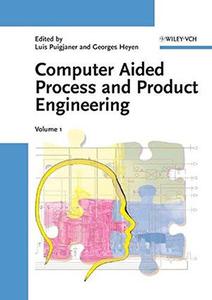
Computer Aided Process and Product Engineering By
2006 | 889 Pages | ISBN: 3527308040 | PDF | 51 MB
Computer aided process engineering (CAPE) tools have been very successfully used in process design and product engineering for a long time. In particular, simulation and modelling tools have enabled engineers to analyse and understand the behaviour of selected processes prior to building actual plants. The aim of design or retrofit of chemical processes is to produce profitably products that satisfy the societal needs, ensuring safe and reliable operation of each process, as well as minimising any effects on the environment. This involves the conceptual design or retrofit of plants and processes, novel manufacturing approaches, process/control system design interactions and operability, manufacturability, environmental and safety issues. Backed by current studies, this 2-volume set gives a comprehensive survey of the various approaches and latest developments on the use of CAPE in the process industry. An invaluable reference to the scientific and industrial community in the field of computer aided process and product engineering.Content: Chapter 1 Introduction (pages 1-10): Luis Puigjaner and Georges HeyenChapter 1 Large?Scale Algebraic Systems (pages 15-34): Guido Buzzi?Ferraris and Davide MancaChapter 2 Distributed Dynamic Models and Computational Fluid Dynamics (pages 35-106): Young?Il Lim and Stem Bay JorgensenChapter 3 Molecular Modeling for Physical Property Prediction (pages 107-135): Vincent Gerbaud and Xavier JouliaChapter 4 Modeling Frameworks of Complex Separation Systems (pages 137-169): Michael C. Georgiadis, Eustathios S. Kikkinides and Margaritis KostoglouChapter 5 Model Tuning, Discrimination, and Verification (pages 171-187): Katalin M. Hangos and Rozalia LaknerChapter 6 Multiscale Process Modeling (pages 189-221): Ian T. Cameron, Gordon D. Ingram and Katalin M. HangosChapter 7 Towards Understanding the Role and Function of Regulatory Networks in Microorganisms (pages 223-264): Krist V. Gernaey, Morten Lind and Sten Bay JorgensenChapter 1 Synthesis of Separation Processes (pages 269-296): Petros Proios, Michael C. Georgiadis and Efstratios N. PistikopoulosChapter 2 Process Intensification (pages 297-326): Patrick Linke, Antonis Kokossis and Alberto Alva?ArgaezChapter 3 Computer?Aided Integration of Utility Systems (pages 327-381): Francois Marechal and Boris KalitventzeffChapter 4 Equipment and Process Design (pages 383-418): I. David, L. Bogle and B. Eric YdstieChapter 5 Product Development (pages 419-442): Andrzej KraslawskiChapter 1 Resource Planning (pages 447-479): Michael C. Georgiadis and Panagiotis TsiakisChapter 2 Production Scheduling (pages 481-516): Nilay ShahChapter 3 Process Monitoring and Data Reconciliation (pages 517-540): Georges Heyen and Boris KalitventzeffChapter 4 Model?Based Control (pages 541-576): Sebastian Engell, Gregor Femholz, Weihua Gao and Abdelaziz ToumiChapter 5 Real Time Optimization (pages 577-590): Vivek Dua, John D. Perkins and Efstratios N. PistikopoulosChapter 6 Batch and Hybrid Processes (pages 591-619): Luis Puigjaner and Javier RomeroChapter 7 Supply Chain Management and Optimization (pages 621-641): Lazaros G. PapageorgiouChapter 1 Integrated Chemical Product?Process Design: CAPE Perspectives (pages 647-666): Rafiqul GaniChapter 2 Modeling in the Process Life Cycle (pages 667-693): Ian T. Cameron and Robert B. NewellChapter 3 Integration in Supply Chain Management (pages 695-730): Luis Puigjaner and Antonio EspunaChapter 4 Databases in the Field of Thermophysical Properties in Chemical Engineering (pages 731-745): Richard SassChapter 5 Emergent Standards (pages 747-768): Jean?Pierre Belaud and Bertrand BraunschweigChapter 1 Integrated Computer?Aided Methods and Tools as Educational Modules (pages 773-798): Rafiqul Gani and Jens AbildskovChapter 2 Data Validation: a Technology for Intelligent Manufacturing (pages 799-826): Boris Kalitventzeff, Georges Heyen and Miguel MateusChapter 3 Facing Uncertainty in Demand by Cost?Effective Manufacturing Flexibility (pages 827-851): Petra Heijnen and Johan Grievink

Competitive Quality Strategies By Pierre Maillard(auth.)
2012 | 165 Pages | ISBN: 1848214510 | PDF | 4 MB
This book succinctly presents new methodological principles that will help you raise the quality of your valuable production to enhance your competitiveness. The concepts and models of principles of actions presented result from over 20 years of the author observing the ways in which companies of all sizes and in all sectors use specific mechanisms of quality production to give rise to long-lasting competitive factors. You'll find practical guides that will help you better understand and strengthen your approaches to create new competitive edges, based on your employees' culture of quality.Content: Chapter 1 General Principles of Competitive Quality (pages 1-16): Pierre MaillardChapter 2 The Definition of a Competitive Quality Tactic (pages 17-50): Pierre MaillardChapter 3 Deployment of a Competitive Quality Tactic (pages 51-84): Pierre MaillardChapter 4 The Conditions for Success of a Competitive Quality Tactic (pages 85-100): Pierre MaillardChapter 5 Selling a Competitive Quality Tactic (pages 101-116): Pierre MaillardChapter 6 Management of a Competitive Quality Tactic (pages 117-150): Pierre Maillard
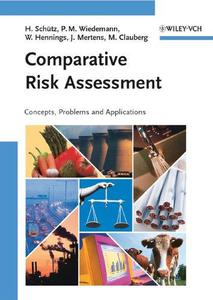
Comparative Risk Assessment: Concepts, Problems and Applications By Holger Schutz, Dr. Peter M. Wiedemann, Dipl.?Ing. Wilfried Hennings, Dr.rer.nat. Johannes Mertens, Dr. Martin Clauberg(auth.)
2006 | 222 Pages | ISBN: 3527316671 | PDF | 2 MB
Providing a catalogue of suggested solutions for different categories of issues, this book offers a balanced overview and methodological examples for the practical implementation of the CRA. It considers CRA in the USA, Europe and Germany, using case studies to analyze and exemplify the decision-making processes and challenges involved. The authors then go on to look at the practical lessons learned from these case studies, together with an in-depth discussion of the underlying scientific hypotheses. Sound scientific knowledge for everyone who makes decisions, whether government ministers, regulators, or company directors.Content: Chapter 1 Introduction (pages 7-12): Chapter 2 Concepts and Definitions (pages 13-26): Chapter 3 CRA in Practice (pages 27-76): Chapter 4 The Empirical Foundations of CRA (pages 77-103): Chapter 5 Conceptual Framework for an Integrated Comparative Risk Evaluation (pages 105-133): Chapter 6 The Practical Implementation of CRA (pages 135-153):

Community Mental Health: Putting Policy into Practice Globally By Graham Thornicroft, Maya Semrau, Atalay Alem, Robert E. Drake, Hiroto Ito, Jair Mari, Peter McGeorge, R. Thara(auth.)
2011 | 240 Pages | ISBN: 1119998654 | PDF | 4 MB
There are wide inconsistencies between, and even within, countries in how community-orientated care is defined and interpreted. The analysis presented in this book take as a starting point an evidence-based balanced care model in which services are provided in community settings close to the populations served, with hospital stays being reduced as far as possible, usually located in acute wards in general hospitals. The surprising conclusion from the research is that the same problems arise in all countries, regardless of resource status, and thus the recommendations of this book apply to mental health provision everywhere. This book reviews the implementation of community-orientated care using the balanced care model. It summarizes the steps, obstacles and mistakes that have been encountered in the implementation of community mental health care worldwide and presents guidelines on how to avoid them. It proposes realistic and achievable recommendations for the development and implementation of community-orientated mental health care over the next ten years. These guidelines will be of practical use to psychiatrists and other mental health and public health practitioners at all levels worldwide, including policy makers, commissioners, funders, non-governmental organisations, service users and carers. A core message of the book is that the mental health sector will more powerfully advocate for better services in future through strong and unified alliances, especially with powerful representation from consumer/service user and carer groups.Community-orientated care draws on a wide range of practitioners, providers, care and support systems (both professional and non-professional), though particular components may play a larger or lesser role in different settings depending on the local context and the available resources, especially trained staff. Research by a WPA task force has demonstrated that most of the challenges are common and global, but with local variations. The book is therefore relevant to psychiatrists and mental health workers in developed countries who are trying to deliver better health care on reduced budgets and for those in the developing economies who are in the position to modernise their mental health care. It provides clear, concise guidance on policy and practice decisions, learning from what has and has not worked in regions in the world.The book contains many tables documenting the evidence, supported by an essential reference list, and a Key Points summary for each chapter.Highly Commended in the Psychiatry section of the 2012 BMA Book Awards.Content: Chapter 1 Global Mental Health: the Context (pages 1-13): Chapter 2 Description of the World Regions (pages 14-22): Chapter 3 Overview of Mental Health Policies Worldwide (pages 23-36): Chapter 4 The Current Provision of Community Mental Health Services (pages 37-89): Chapter 5 Policies, Plans, and Programs (pages 90-96): Chapter 6 Scaling Up Services for Whole Populations (pages 97-118): Chapter 7 Stigma, Discrimination, and Community Awareness about Mental Illnesses (pages 119-134): Chapter 8 Developing a Consensus for Engagement (pages 135-139): Chapter 9 Human and Financial Resources (pages 140-150): Chapter 10 Development, Organization, and Evaluation of Services (pages 151-165): Chapter 11 Lessons Learned and Recommendations for the Future (pages 167-211):
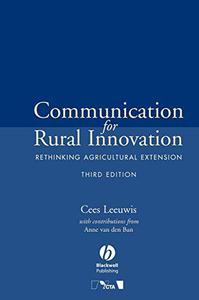
Communication for Rural Innovation: Rethinking Agricultural Extension, Third Edition By
2004 | 415 Pages | ISBN: 063205249X | PDF | 3 MB
This important book is the re-titled third edition of the extremely well received and widely used Agricultural Extension (van den Ban & Hawkins, 1988, 1996). Building on the previous editions, Communication for Rural Innovation maintains and adapts the insights and conceptual models of value today, while reflecting many new ideas, angles and modes of thinking concerning how agricultural extension is taught and carried through today. Since the previous edition of the book, the number and type of organisations that apply communicative strategies to foster change and development in agriculture and resource management has become much more varied and this book is aimed at those who use communication to facilitate change in agriculture and resource management. Communication for Rural Innovation is essential reading for process facilitators, communication division personnel, knowledge managers, training officers, consultants, policy makers, extension specialists and managers of agricultural extension or research organisations. The book can also be used as an advanced introduction into issues of communicative intervention at BSc or MSc level.Content: Chapter 1 Fmatter (pages i-xii): Chapter 1 Introduction (pages 1-21): Chapter 2 From Extension to Communication for Innovation (pages 22-39): Chapter 3 The Ethics and Politics of Communication for Innovation (pages 40-48): Chapter 4 The Role of Communicative Intervention in Policy Planning: Instrumental and Interactive Approaches (pages 49-58): Chapter 5 Understanding Human Practices: The Example of Farming (pages 59-93): Chapter 6 Knowledge and Perception (pages 94-116): Chapter 7 Communication and the Construction of Meaning (pages 117-126): Chapter 8 Changing Perspectives on Innovation (pages 127-146): Chapter 9 Social and Individual Learning (pages 147-162): Chapter 10 Negotiation Within Interactive Processes (pages 163-176): Chapter 11 The Role of Outsiders and Different Intervention Approaches (pages 177-188): Chapter 12 The Potential of Basic Communication Forms and Media (pages 189-208): Chapter 13 Communication for Innovation Methods (pages 209-246): Chapter 14 The Management of Interactive Innovation Processes (pages 247-274): Chapter 15 The Planning of Individual Activities (pages 275-292): Chapter 16 Organisational Management, Learning and Research (pages 293-320): Chapter 17 Agricultural Knowledge and Information Systems (pages 321-328): Chapter 18 Privatisation and the Emergence of 'Knowledge Markets' (pages 329-349): Chapter 19 Co?operation Across Scientific Disciplines and Epistemic Communities (pages 350-362): Chapter 20 Approaches and Issues for Further Conceptual Research (pages 363-480):
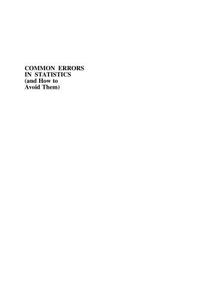
Common Errors in Statistics (and How to Avoid Them), Third Edition By P. I. Good, J. W. Hardin(auth.)
2009 | 267 Pages | ISBN: 0470457988 | PDF | 11 MB
"All statistics students and teachers will find in this book a friendly and intelligentguide to . . . applied statistics in practice." -Journal of Applied Statistics". . . a very engaging and valuable book for all who use statistics in any setting." -CHOICE". . . a concise guide to the basics of statistics, replete with examples . . . a valuablereference for more advanced statisticians as well." -MAA ReviewsNow in its Third Edition, the highly readable Common Errors in Statistics (and How to Avoid Them) continues to serve as a thorough and straightforward discussion of basic statistical methods, presentations, approaches, and modeling techniques. Further enriched with new examples and counterexamples from the latest research as well as added coverage of relevant topics, this new edition of the benchmark book addresses popular mistakes often made in data collection and provides an indispensable guide to accurate statistical analysis and reporting. The authors' emphasis on careful practice, combined with a focus on the development of solutions, reveals the true value of statistics when applied correctly in any area of research. The Third Edition has been considerably expanded and revised to include: A new chapter on data quality assessmentA new chapter on correlated dataAn expanded chapter on data analysis covering categorical and ordinal data, continuous measurements, and time-to-event data, including sections on factorial and crossover designs Revamped exercises with a stronger emphasis on solutions An extended chapter on report preparationNew sections on factor analysis as well as Poisson and negative binomial regression Providing valuable, up-to-date information in the same user-friendly format as its predecessor, Common Errors in Statistics (and How to Avoid Them), Third Edition is an excellent book for students and professionals in industry, government, medicine, and the social sciences. Content: Chapter 1 Sources of Error (pages 1-11): Chapter 2 Hypotheses: The Why of Your Research (pages 13-25): Chapter 3 Collecting Data (pages 27-47): Chapter 4 Data Quality Assessment (pages 49-55): Chapter 5 Estimation (pages 57-66): Chapter 6 Testing Hypotheses: Choosing a Test Statistic (pages 67-100): Chapter 7 Miscellaneous Statistical Procedures (pages 101-114): Chapter 8 Reporting Your Results (pages 115-137): Chapter 9 Interpreting Reports (pages 139-147): Chapter 10 Graphics (pages 149-173): Chapter 11 Univariate Regression (pages 175-192): Chapter 12 Alternate Methods of Regression (pages 193-203): Chapter 13 Multivariable Regression (pages 205-216): Chapter 14 Modeling Correlated Data (pages 217-223): Chapter 15 Validation (pages 225-231):
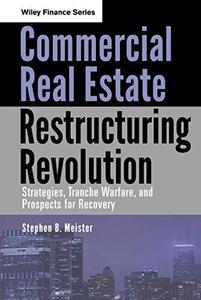
Commercial Real Estate Restructuring Revolution: Strategies, Tranche Warfare, and Prospects for Recovery By Stephen B. Meister(auth.)
2011 | 257 Pages | ISBN: 0470626836 | PDF | 3 MB
How to plan for the commercial real estate collapse Encompassing apartment, office, retail, hospitality, warehouse, manufacturing, and flex or R & D buildings, commercial real estate (CRE) investment in the U.S. totaled $6.4 trillion at the end of 2008. As noted in the February 2010 Congressional Oversight Panel Report, $1.4 trillion of CRE debt is coming due by 2014 and half of the CRE projects securing such debt are underwater. Commercial Real Estate Restructuring Revolution: Strategies, Tranche Warfare, and Prospects for Recovery looks at how we got into this mess-impacts of the housing crisis, debt structures, lender-borrower collusion, and bankruptcy abuses-and offers possible solutions to the CRE crisis. Along the way, author Stephen Meister:* Discusses how CRE value losses are being driven by investors' risk adjusted cap rates, not just poorer market fundamentals* Discusses strategies and emerging trends in CRE foreclosures, including forced lender fundings, lender attempts to chill bids and UCC foreclosure tactics and pitfalls* Proposes legislative solutions and explains how any rebound will require federal spending cuts, a vast deleveraging and a market clearing processWith a crashing CRE debt market and the hundreds of CRE-heavy regional banks destined for failure, getting out ahead of the curve is essential. Commercial Real Estate Restructuring Revolution addresses how we got here and how you can plan for the impending crash.Content: Chapter 1 The Housing Bubble (pages 1-14): Chapter 2 The Bubble Implodes (pages 15-31): Chapter 3 Capital Markets Supporting U.S. Commercial Real Estate (pages 33-54): Chapter 4 Cre Values and Loan Defaults (pages 55-64): Chapter 5 Putting Off the Day of Reckoning (pages 65-76): Chapter 6 Tranche Warfare (pages 77-89): Chapter 7 Loans to Own and Chilling the Bid (pages 91-100): Chapter 8 Funding Cessations and Extension Fights (pages 101-116): Chapter 9 Bankruptcy Considerations (pages 117-130): Chapter 10 Multifamily Market (pages 131-143): Chapter 11 Governmental Actions Caused the Affordable Housing Crisis (pages 145-156): Chapter 12 Governmental Reactions to the Housing Crisis (pages 157-174): Chapter 13 Assessing Blame for the Financial Crisis (pages 175-188): Chapter 14 The Centerpiece for Real Reform (pages 189-201): Chapter 15 Other Areas Requiring Reform (pages 203-217):


